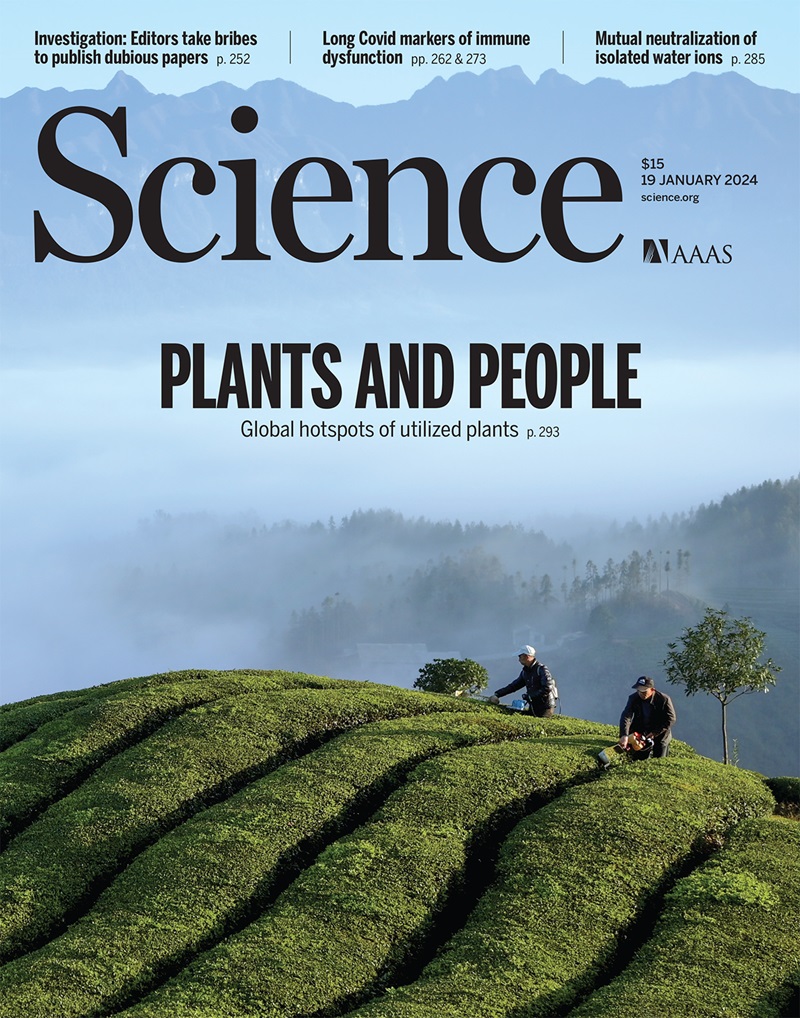Characterization and heterologous reconstitution of Taxus biosynthetic enzymes leading to baccatin III
IF 44.7
1区 综合性期刊
Q1 MULTIDISCIPLINARY SCIENCES
引用次数: 0
Abstract
Paclitaxel is a well known anticancer compound. Its biosynthesis involves the formation of a highly functionalized diterpenoid core skeleton (baccatin III) and the subsequent assembly of a phenylisoserinoyl side chain. Despite intensive investigation for half a century, the complete biosynthetic pathway of baccatin III remains unknown. In this work, we identified a bifunctional cytochrome P450 enzyme [taxane oxetanase 1 (TOT1)] in Taxus mairei that catalyzes an oxidative rearrangement in paclitaxel oxetane formation, which represents a previously unknown enzyme mechanism for oxetane ring formation. We created a screening strategy based on the taxusin biosynthesis pathway and uncovered the enzyme responsible for the taxane oxidation of the C9 position (T9αH1). Finally, we artificially reconstituted a biosynthetic pathway for the production of baccatin III in tobacco.
导致巴卡丁 III 的 Taxus 生物合成酶的特征和异源重组。
紫杉醇是一种著名的抗癌化合物。它的生物合成过程包括形成高官能度的二萜核心骨架(巴卡丁 III)以及随后组装苯基异丝氨酸酰基侧链。尽管经过半个世纪的深入研究,巴卡丁 III 的完整生物合成途径仍然未知。在这里,我们发现了一种双功能细胞色素 P450 酶(紫杉烷氧杂环丁烷酶,TOT),它能催化紫杉醇氧杂环丁烷形成过程中的氧化重排,代表了之前未知的氧杂环丁烷环形成酶机制。我们创建了一种基于紫杉素生物合成途径的筛选策略,并发现了负责紫杉烷 C9 位氧化的酶(T9αH)。最后,我们在烟草中人工重构了生产巴卡丁 III 的生物合成途径。
本文章由计算机程序翻译,如有差异,请以英文原文为准。
求助全文
约1分钟内获得全文
求助全文
来源期刊

Science
综合性期刊-综合性期刊
CiteScore
61.10
自引率
0.90%
发文量
0
审稿时长
2.1 months
期刊介绍:
Science is a leading outlet for scientific news, commentary, and cutting-edge research. Through its print and online incarnations, Science reaches an estimated worldwide readership of more than one million. Science’s authorship is global too, and its articles consistently rank among the world's most cited research.
Science serves as a forum for discussion of important issues related to the advancement of science by publishing material on which a consensus has been reached as well as including the presentation of minority or conflicting points of view. Accordingly, all articles published in Science—including editorials, news and comment, and book reviews—are signed and reflect the individual views of the authors and not official points of view adopted by AAAS or the institutions with which the authors are affiliated.
Science seeks to publish those papers that are most influential in their fields or across fields and that will significantly advance scientific understanding. Selected papers should present novel and broadly important data, syntheses, or concepts. They should merit recognition by the wider scientific community and general public provided by publication in Science, beyond that provided by specialty journals. Science welcomes submissions from all fields of science and from any source. The editors are committed to the prompt evaluation and publication of submitted papers while upholding high standards that support reproducibility of published research. Science is published weekly; selected papers are published online ahead of print.
 求助内容:
求助内容: 应助结果提醒方式:
应助结果提醒方式:


